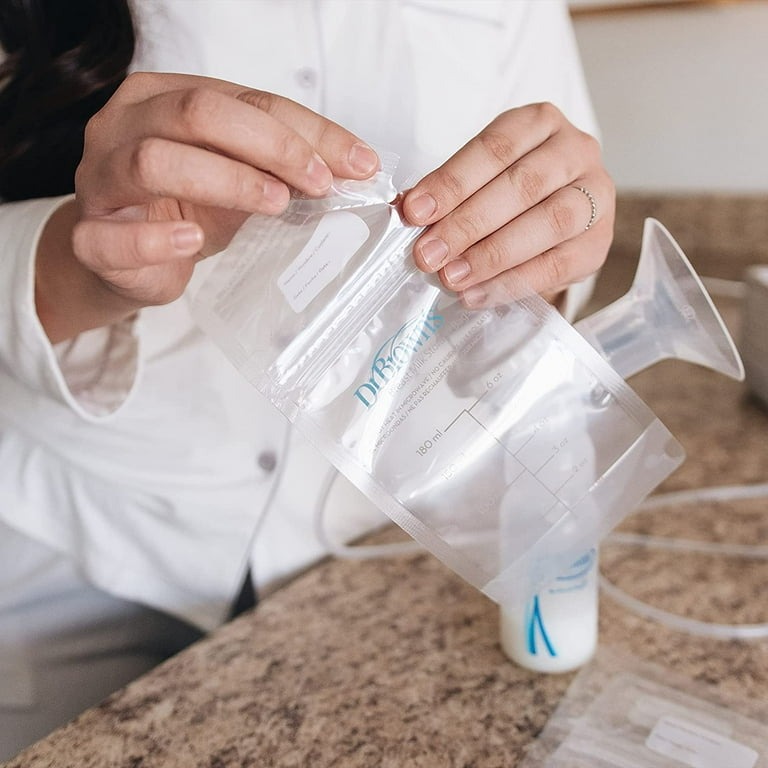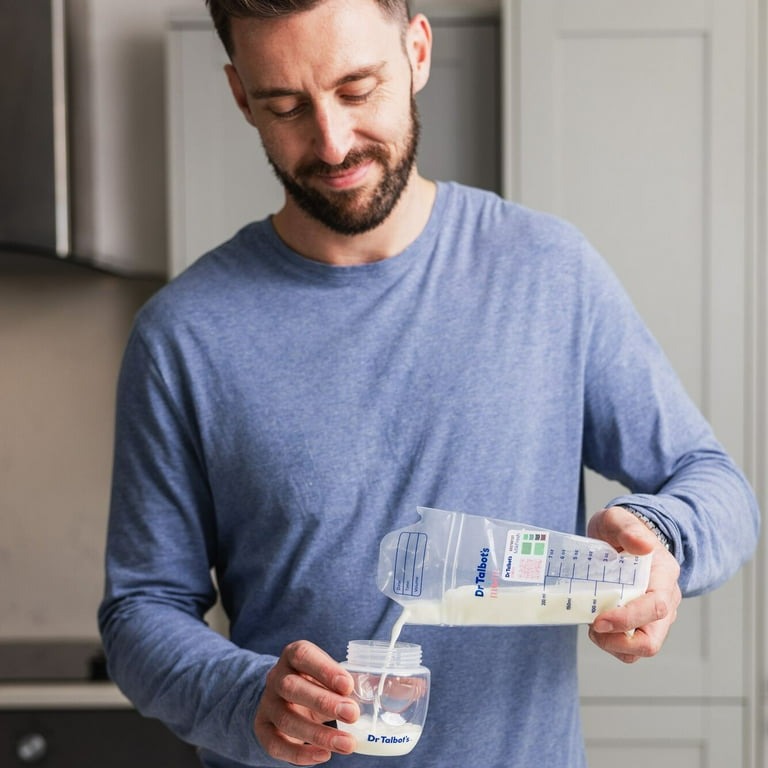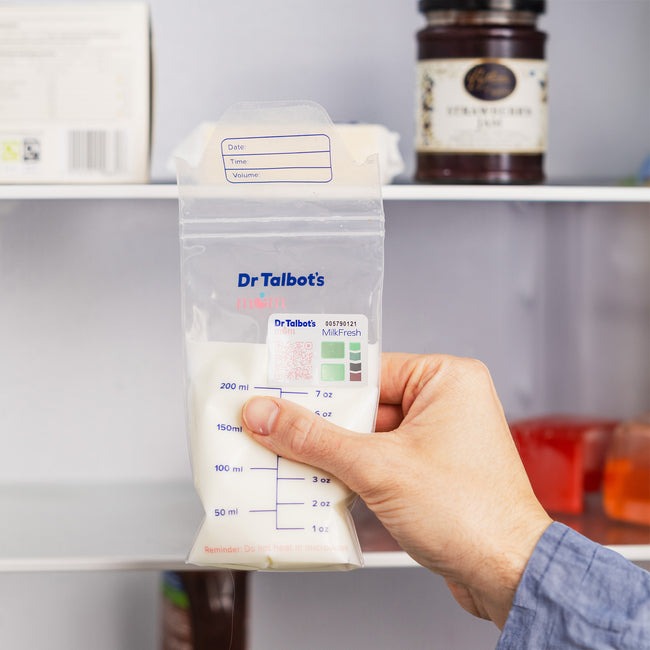Importance of Proper Breast Milk Storage
Breast milk is the best nutrition for infants. To ensure it stays that way, proper storage is key. It protects your baby from bacteria and other contaminations. It also helps maintain the milk’s nutritional value. As a parent, you surely ask, ‘can you refreeze breast milk?’ Let’s explore this topic.
First, it’s crucial to know that breast milk can deteriorate if stored improperly. Temperature changes can affect its quality. It’s why we emphasize the right storage techniques. Remember, the goal is to keep milk safe for your baby’s consumption.
Next, consider the storage time frames. Freshly pumped breast milk has a shelf life. It’s important to follow recommended guidelines for refrigerating and freezing. These guidelines help maximize milk freshness and safety.
Finally, understand the need for consistent practices. Every time you handle breast milk, follow the same steps. This approach minimizes risks and maintains quality. Whether you’re storing at home or on the go, consistency is your ally.
To sum up, proper breast milk storage matters for your baby’s health. It helps avoid infections and preserves the milk’s quality. Think of it as the foundation for safe feeding practices. Keep these tips in mind when handling your precious milk.
Circumstances Under Which Refreezing is Considered
The question of ‘can you refreeze breast milk?’ isn’t a simple yes or no. It depends on specific circumstances. It’s vital to consider these before choosing to refreeze.
Firstly, if milk is partially thawed but still has ice crystals, refreezing is generally safe. The presence of ice means it hasn’t warmed up to bacteria-breeding temperatures. However, complete thawing rules out safety refreezing because bacteria can multiply at warmer temperatures.
Secondly, if breast milk is thawed in the fridge and hasn’t been at room temperature for more than two hours, it can be refrozen. The short time outside of optimal cold storage may not have compromised its quality.
Remember, these are general guidelines. The decision should factor in how the milk was handled and its exposure to fluctuating temperatures. Always prioritize your baby’s safety and health.
Risks Involved in Refreezing Breast Milk

Refreezing breast milk might pose risks. While some situations permit it, you must know the dangers. Here’s what to keep in mind.
First, quality may drop. Each freeze-thaw cycle can reduce vital nutrients and antibodies. This makes milk less beneficial for your baby.
Second, bacteria growth is a threat. Milk thawed too long at room temperature risks contamination. Refreeze it, and bacteria might stay, posing health risks to infants.
Third, chemical changes can occur. Freezing alters breast milk’s natural state. Refreezing multiplies these changes, possibly affecting milk’s taste and texture. Babies might refuse it.
Finally, safety is crucial. Can you refreeze breast milk? Yes, in some cases. But never compromise on your child’s well-being. If in doubt, better to discard than risk.
Keep these risks in mind when handling breast milk. Ensure you do what’s best for your baby’s health and nourishment.
Guidelines for Refreezing Breast Milk
When it comes to the question of ‘can you refreeze breast milk?’ the answer depends on following strict guidelines to ensure safety and nutrition. If you’re considering refreezing, keep these steps in mind:
- Check for Ice Crystals: Only consider refreezing if the milk still has ice crystals. This means it’s cold enough to prevent bacteria growth.
- Note the Time: Did the milk sit in the fridge and not reach room temperature for over two hours? If so, it’s typically safe to refreeze.
- Assess Initial Freshness: Refreeze milk that was previously fresh and frozen quickly after expressing. Avoid refreezing milk that was close to spoiling before initial freezing.
- Limit Exposures: Each time you thaw and refreeze, you risk nutrient loss and bacteria growth. Try to limit the breast milk to one freeze-thaw cycle.
- Sanitize Containers: Always use sterile containers when refreezing to prevent contamination.
By following these guidelines, you can make an informed decision about refreezing breast milk. Always err on the side of caution to protect your baby’s health.
How to Thaw Frozen Breast Milk Safely
Thawing breast milk correctly is as critical as storing it properly. Here are some safe thawing techniques to consider:
- Refrigerator Thawing: Ideally, transfer frozen breast milk into the fridge for an overnight thaw. It’s slow, but it’s the safest method to retain nutrients.
- Cold Water Bath: If you need it sooner, submerge the milk container in cold water. Replace the water every 30 minutes to continue thawing.
- Gradual Warming: After thawing in cold water, you can gently warm the milk. Use lukewarm water for this step, not hot.
- Avoid Microwaves: Never use a microwave to thaw breast milk. It can heat unevenly and destroy precious nutrients and antibodies.
- Do Not Refreeze: Once fully thawed, do not put the breast milk back in the freezer. Use the milk within the recommended time frames.
When you thaw breast milk, you should always test the temperature before feeding your baby. It should be body temperature, warm but not hot. Remember, ‘can you refreeze breast milk?’ is a matter of safety first. Always prioritize the well-being of your baby over the convenience of saving breast milk.
Best Practices for Breast Milk Storage

To ensure your baby’s health, follow these best practices for breast milk storage:
- Maintain a Consistent Temperature: Keep breast milk in a steady cold environment. This means using a fridge or freezer with a stable temperature.
- Separate Storage from Other Foods: Store breast milk in a special area. This avoids cross-contamination with other items in your fridge or freezer.
- Use Sterile Containers: Opt for BPA-free storage bags or clean glass bottles. Sterilize them before each use.
- Label Clearly: Mark each container with the date of expression. This helps track freshness and prioritize older milk for use.
- Follow the 4-6 Rule: Generally, keep fresh milk at room temperature for up to 4 hours, in the fridge for 4 days, and in the freezer for 6 months.
- Avoid Filling To the Brim: Leave a small space at the top of your storage container. Liquids expand when they freeze, and this avoids spills.
- Thaw with Care: Thaw breast milk in the fridge or by using a water bath. Never use direct heat or microwaves.
By adhering to these best storage practices, you minimize risks. Remember, ‘can you refreeze breast milk?’ is a question of quality and safety. Always place your baby’s needs first when deciding how to store and handle breast milk.
Innovative Breast Milk Storage Solutions in 2025
As we look to the future, innovation in breast milk storage has taken center stage in 2025. Here are some breakthrough solutions that are making a difference:
- Smart Storage Bags: These bags monitor temperature and alert you if the milk is at risk of spoiling.
- Wireless Cooler Systems: Portable coolers now keep breast milk cold for extended periods, no matter where you are.
- Eco-Friendly Materials: Storage options now include biodegradable materials, reducing environmental impact.
- Digital Tracking Lids: Lids with built-in trackers allow parents to log and manage breast milk storage details.
- Temperature-Stable Containers: Revolutionary materials maintain a consistent temperature, reducing the need to ask, ‘can you refreeze breast milk?’.
Innovative storage solutions like these help maintain the quality and safety of breast milk. This ensures that even with busy lifestyles, parents can provide the best nutrition to their babies while minimizing waste and maintaining ecological balance.
Frequently Asked Questions about Refreezing Breast Milk

When it comes to refreezing breast milk, several questions often crop up. Here are the most common queries, answered succinctly to help guide you through the process.
- Is it safe to refreeze breast milk after it has thawed?
In some cases, yes. If the milk still has ice crystals or was only thawed in the fridge, it’s generally safe to refreeze.
- How many times can breast milk be thawed and refrozen?
It’s best to limit the cycle to just one. Multiple freeze-thaw cycles can diminish nutrients and increase risk of bacterial growth.
- What are the signs that breast milk should not be refrozen?
If the milk has been at room temperature for over two hours, or has no ice crystals left, do not refreeze it.
- Does refreezing affect the quality of breast milk?
Yes, refreezing can reduce the antibodies and nutrients that are essential for your baby’s health.
- How long can refrozen breast milk be stored?
If refrozen, use it within the initial recommended frozen storage time minus the thawing period.
- Can you refreeze breast milk that was thawed outside the fridge?
If it was out for less than two hours, and it’s still cold with ice crystals, it may be refrozen but it’s not ideal.
- How should refrozen breast milk be used?
Use it as quickly as possible and always check for any signs of spoilage before feeding.
These FAQs highlight the key points to consider when asking ‘can you refreeze breast milk?’. While refreezing is not always advisable, understanding when and how it can be done safely ensures your baby’s nourishment isn’t compromised.